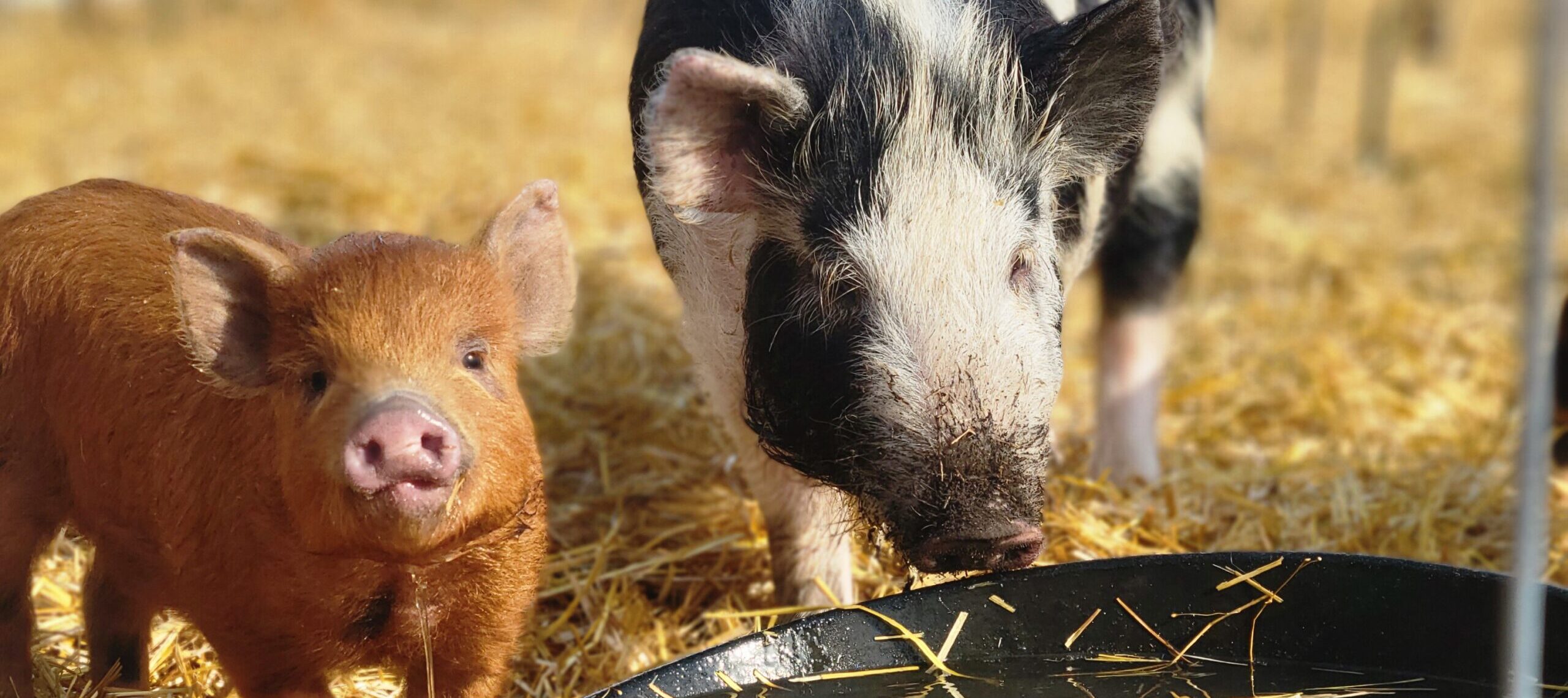What is an Ossabaw Island Hog?
The Ossabaw Island Hog is critically endangered. It is one of the breeds at the Smithsonian’s National Zoo & Conservation Biology Institute. The Ossabaw has Spanish ancestry. Over time domesticated animals would escape and become feral, mixing genetics with local breeds. However, animals on Ossabaw Island were isolated and therefore maintained their original genetics.
For this reason, Ossabaw Island Hogs present very similarly to the Spanish Iberian Hog. These aren’t a large breed of pig and fall under a small breed category. In the wild, males can get to 200 pounds, and females are 100-150 pounds. However, we have found that both genders average 200-250 pounds in captivity.
Appearance

The Snout
on an Ossabaw is VERY long. The day we got our Ossabaw, they reminded us of oversized hedgehogs. With these snouts – they’re rooting machines! If you have a rock pile or garden needing to be cleared, hire these guys. When we clean up our garden at the end of the year, we lead these guys to turn the garden. They continue rooting the soil in the winter and searching for any missed, delicious roots. Once spring has rolled around, we rake our soil flat and plant our veggies.
Their Coats
are exceptionally thick and come in various colours, including black, red, tan, and black and white spotted.
The Body Shape
of an Ossabaw is short-backed and leggy. The Olympic athletes of the pig world. They can run impressively fast and jump four feet fences without a second thought. Built for survival in the wild, the Ossabaw Island Hog is very hardy. Their shoulders are more prominent than their hips, similar to wild boars’. Understanding proper housing for this breed is essential before adding them to your farm.


Their appearance is wild looking. Many people who see our Ossabaw Island Hogs assume they’re wild boars or crosses, and though this is not true, they have similar appearances. They sport a wide array of colours and combinations. They may look like wild boars but don’t have the same temperament. When socialized with regularly they are incredibly friendly. The Ossabaw is agile, curious, and friendly. They’re brilliant and must be in pens that accommodate an active mind and body. They are very vocal. The vocal pitches they’re capable of hitting make us laugh every time. They make more extended, higher-pitch notes that sound like a pig attempting the opera. We enjoy their high-pitched singing noises as they vocalize their stories to us.
Diet
In their natural habitat, Ossabaw Island Hogs eat roots and tubers constitute the main food items taken in winter, whereas leeches, earthworms, insects and fiddler crabs make up a greater portion of the diet in spring and summer. Here at Hogs & Horns Homestead, they are fed a vegetarian diet consisting of a custom soy-free grain ration. They are also offered hay and veggies along with the ability to forage in their pens.
Our herd is offered free-choice hay and straw along with their grains. Offering them high-quality hay and straw in the winter months ensures that they’re getting their daily fibre. This also gives them a choice to snack here and there in between meals.
Fun Fact!
Ossabaw Island Hogs are unique in that as an adaption to the food cycle of the island with spare food in the spring season they developed a biochemical system of fat metabolism, which allows them to store a larger proportion of fat than any other hog. With this, they have a form of low-grade, non-insulin-dependent diabetes.

Ossabaw Island Hog Pork

Ossabaw pork is flavour-packed. Their meat is said to be higher in Omega 3 and has a dark red colour. The Ossabaw Island Hog has a significantly increased level of fat. However, their fat is exceptionally soft and melts at a lower temperature than many other swine breeds. Cook Ossabaw Island Hog pork low and slow and enjoy the meat and fat bite for bite. They are known as some of the best pork in the world.



You must be logged in to post a comment.